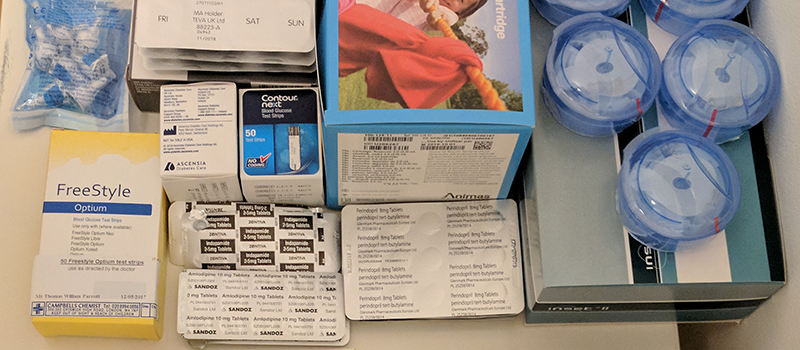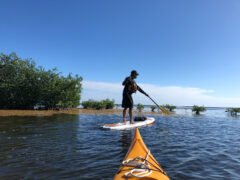Travelling in Latin America with Type One Diabetes

Having a medical condition such as type 1 diabetes can be a challenge at the best of times, but this shouldn’t put anyone off travelling anywhere, and least not to the wonders of Latin America.
I was diagnosed Type 1 when I was twelve and have travelled extensively, not only in Latin America. With some careful planning and a good support network, nowhere is off limits to me. I have spent five days on a cargo ship on a trip on the Amazon and a week on the Trans- Siberian railway among other daunting journeys. You can travel and see the world with Type one diabetes, just like anyone else.
I am making an assumption that if you are reading this then either yourself or someone close to you has diabetes, so I won’t go into explaining all the ‘diabetes jargon’. If you don’t know what a hypo is, then you may want to skip this article. I am also not a qualified doctor so please take this information as advice from one diabetic to another and always follow the instructions of your diabetes specialist nurse and consultants as they will be the people best to offer extensive advice on your condition.
I now use a pump and a CGM which has made travel (and life) a lot easier, but I have also travelled using pens and finger sticks.
First things first, insulin
I always carry double my needs and ask someone I am travelling with to carry the other backup supply. Depending on the length of the trip (nine months being my longest) I choose two thermos flasks which will fit all the insulin. I usually wrap these in little bits of cardboard (hexagonal Smartie tubes cut in half work well) to insure they don’t bang against each other inside.They will be inevitably checked by airport security, but I have never had any trouble crossing international borders or airport security with my insulin or any of my supplies. I carry a letter written by both my diabetic nurse and my GP, translated into the local language (it’s quite easy in Latin America as its really only Spanish or Portuguese) that explains everything I’m carrying.
If I’m going on a long haul flight or a very long bus journey I found it incredibly comforting to know that insulin can be out of the fridge for 24 hours before it starts to degrade, so just keep it in the thermos. It’s also really important to learn the correct word for fridge, as insulin cannot go into the freezer. If needs be just walk behind a bar with a member of staff and put it in a fridge yourself.
It also takes some convincing to ask someone to give up a lot of space in their luggage for back up supplies, so be kind to your travel companions.

An important note on insulin and high altitudes. At high altitude the body naturally releases cortisone to help get more oxygen from the blood, unfortunately cortisone attacks insulin and (usually) blood sugars will rise. It’s useful to keep your sugars a little higher than usual in high attitudes as the feeling of attitude sickness is very similar to that of a hypo so keeping the right balance can be tricky. I found the Dexcom CGM’s very helpful for this, being able to see the rise of my sugars as they were happening made it much easier to anticipate what to do next.
Before heading out on a trip, it’s worth asking your diabetic nurse if there is anywhere nearby to buy insulin should the worst should happen. In 2014; Lima, Rio de Janeiro, Santiago and Mexico City all had pharmacies and hospitals that could dispense my type of insulin, but make sure you have the correct type and solution amount noted down somewhere in case it's needed. Every trip booked with Journey Latin America provides a phone number for you to ring in an emergency which is always comforting to know should you encounter any problems.
Carb counting
It feels like Latin American bread is about four times more carbohydrate heavy than UK bread, so be careful with the amounts you eat. That being said much of the time I am doing lots of activity so the extra bump of carbs works out quite well. I understand that parents may be reading this, so I would just try and work out if your child is going to be any more active than they usually are at home.
Getting Ill
Getting ill abroad is always a worrying time, and even more so with diabetes. I have been ill a total of three times on all my trips to Latin America, once in Brazil when I was 14, once in Argentina and once in Belize. Each time the cause of my illness was food poisoning rather than a problem associated with my diabetes. Nonetheless it is important to seek the attention of a medical professional as soon as possible should this occur.
General tips
It’s worth taking a needle clipper to properly dispose of your sharps as there are very few places in Latin America to dispose of them, or alternatively find a safe container to put them in and dispose of them when you get home.
There are some great diet ‘no sugar’ drinks on offer in Latin America, my personal favourites being Inca Cola Zero and Antarctica’s Guarana light. Coca-Cola Zero seems to be much more widely available than Diet Coke, especially in Central America.
Although it’s daunting don’t be afraid to travel – and if you have any queries about travelling with diabetes please do get in touch.
Tailor-made holidays
Flexible, custom-made holidays to Latin America created to match your exact requirements: our tailor-made itineraries are as unique as the clients for whom they are designed.
Design my tripPapagaio
Your edit for Latin American inspiration
Our exciting range of articles on Latin America explore everything from iconic destinations and lesser-known cultural gems to delicious traditional recipes. You’ll also find exclusive travel tips, first-hand client reviews and the chance to get your personal questions answered by our travel experts.
View Extraordinary Inspiration






































